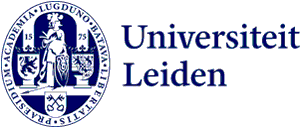
Peace in the Middle East? Students seek solutions in Peace Academy
Finding solutions to the Israeli-Palestinian conflict is the not-inconsiderable task of the new Peace Academy in The Hague. Professor Maurits Berger and twelve students from different conflict zones are starting a creative thinking process that aims to discover the basic conditions for peace in the Middle East.
From endless discussions to peace
Both in the lecture hall and outside Berger sees students struggling with the violence and all the victims in Israel and Gaza. ‘Some feel hopelessly trapped in an overwhelming sense of helplessness. This leads to endless discussions about what can be termed just or unjust. Is the war self-defence or is it genocide? Such discussions lead nowhere. This changes if you start thinking about peace. Then you suddenly have to come up with creative solutions. Instead of focusing on the causes and analysis of all the misery, we are taking steps to get out of it. It sounds terribly soft but peace is only made between enemies.’
‘There is no rule book for peace agreements. Sometimes peace is related to personalities, moments and coincidences’
Berger approached students from different backgrounds: Israeli, Palestinian, Turkish Cypriot, Afghan, Iranian, Chinese and African. The important thing is that they bring different perspectives and learn to be open to the unexpected. ‘There is no rule book for peace agreements. Sometimes peace is related to personalities, moments and coincidences. I therefore want them to read the memoirs of the Oslo Accords negotiators [peace agreement between the Palestinian PLO and Israel in the 1990s, Ed.]’
Art and peace movement
The six sessions will cover various peace processes, such as in South Africa and Northern Ireland. But there will also be room to think outside the box, for example about the role artists play. ‘It is often the arts that take the first steps in peace processes. So we are going to the Royal Academy of Art, something we have never done before in International Studies. Then we’ll set to work with all that creativity.’
Actively involve students
Berger emphasises that the Peace Academy is a developing initiative. It is not a course but a voluntary activity. The students have provided input on what to cover in the sessions. Some students want a round of introductions where they can explain their relationship to the conflict in Israel and Palestine. ‘I wouldn’t have done so myself because then you emphasise the differences. But they said they felt it necessary to explain those emotional ties to each other, so that is exactly what we are going to do.’
‘We are not going to achieve peace here. We are going to start a thinking process that fosters creative thinking and a positive outlook’
What do they hope to achieve with the Peace Academy? ‘We are not going to achieve peace here. We are going to start a thinking process that fosters creative thinking and a positive outlook’, says Berger. ‘And in the long run: if a seed is planted in just one participant who goes on to work for the Israeli or Palestinian government in ten years and can take the initiative towards peace, we will have more than succeeded.’
Maurits Berger studied Arabic and Law and spent eight years in Egypt and Syria, where he worked in roles including as an election observer in Gaza. He then worked for five years as a Middle East expert at Clingendael Institute, where he was involved in peace initiatives, such as between North and South Sudan. His proposal in 2005 of initiating negotiations between Israel and Hamas in the privacy of Clingendael was rejected as too controversial. He later set up small student ‘think tanks’ at the university to seek solutions to the tension surrounding Islam in the Netherlands.
Text: Tim Senden
